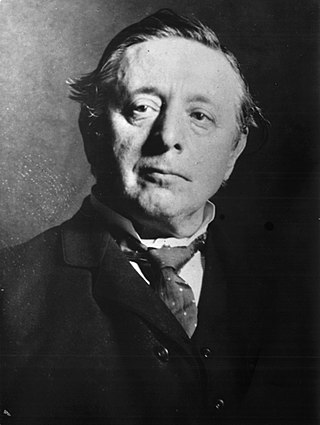Frederic Marlett Bell-Smith
Canadian artist From Wikipedia, the free encyclopedia
Frederic Marlett Bell-Smith RCA (also known as F. M. Bell-Smith) (September 26, 1846 – June 23, 1923) was a Canadian landscape painter known for his works of the Rocky Mountains and the Selkirk Range, Quebec and Maine.[1]
Career
Bell-Smith emigrated to British North America from England in 1866. He had studied painting in England at the South Kensington School of Art and worked as an artist and photographer in Montreal, where he helped his father, John Bell-Smith, "a painter of miniature portraits of considerable talent,"[2] to found the Society of Canadian Artists in 1867. In 1871, he moved to Hamilton, Ontario and married Anne Myra Dyde. In 1874 he moved to Toronto, then in 1879 returned to Hamilton.[3]
Throughout the 1870s and 1880s he sketched, painted, and taught art classes in London, Ontario (1881–1888); in St. Thomas, Ontario as Art Director of Alma College (1881–1890) and then as director of the Toronto Art School in 1889.[4] He returned to study in Paris at the Académie Colarossi in 1896.[5]
Painting the Rocky Mountains

In 1886 Bell-Smith seized the opportunity to paint the Canadian Rockies when the Vice-President of the Canadian Pacific Railway (CPR), William Cornelius Van Horne, offered free travel passes to several artists who would sketch and paint vistas of the Canadian west. The CPR wanted artistic works that would heighten public interest in transcontinental travel. Bell-Smith’s stylistically conservative paintings were popular in both eastern Canada and Britain, and he frequently returned to the west to work. He was particularly fond of the natural splendour of the area around Lake Louise and by the turn of the century he made annual trips to the west.[6]
These experiences led Bell-Smith to advocate for a Canadian school of art which drew its uniqueness from the use of the Canadian landscape as its subject matter. Later artists, including Tom Thomson, Emily Carr, and the Group of Seven, contributed to this focus on Canada’s natural environment in art.[7]
Lights of a City Street
Bell-Smith also created many paintings of late Victorian and Edwardian eastern Canada and Britain. One of his most famous and playful paintings is Lights of a City Street, which portrays the intersection of Yonge and King Streets in Toronto in 1894. Bell-Smith depicted himself in the painting as the man buying a newspaper, his son is the man raising his hat, and the policeman is Bill Redford, the constable actually stationed at the corner.[8]
Painting Queen Victoria
Summarize
Perspective

In connection with a series of paintings related to the death of Prime Minister Sir John Thompson in 1894, Bell-Smith managed to negotiate a sitting with Queen Victoria, who normally disliked having her portrait taken by anyone aside from a few select portraitists. According to Bell-Smith, he followed the advice of a Canadian senator to approach Lord Clinton and Hafiz Abdul Karim about a sitting with the Queen, but, received discouraging replies from both men. Bell-Smith was able to obtain sittings with Princesses Beatrice and Louise, the latter being married to the Duke of Argyll, who was a former Governor General of Canada and an advocate of Bell-Smith. The Princesses used their influence to persuade the Queen to sit for Bell-Smith. The cordial sitting lasted for over an hour, during which Queen Victoria permitted Bell-Smith to position her as he wished; Princess Louise, an artist herself, offered Bell-Smith advice. The Queen also spoke (mostly in German) to her daughters and other attendants about her grandchildren. At the end of the sitting, the Queen approved Bell-Smith’s work. This anecdotal episode demonstrated Bell-Smith’s influence and popularity in Britain. Indeed, Bell-Smith contemplated moving to Britain in the 1890s. However, he decided to divide his time between Canada and Europe,[4] continuing to paint until his death, becoming less active towards the end of his life.
Honours
He was a founding member of the Royal Canadian Academy of Arts in 1880.[3] He also belonged to the Society of Canadian Artists (1867) which he helped found; a founder member of the Ontario Society of Artists (1872), of which he was president (1905-1908); the Royal British Colonial Society of Artists (1908); the Palette Club, Montreal (1892); and the New Water Colour Society, Toronto (1900).[5] In 1908 he was a founding member of the Arts and Letters Club of Toronto.[9]
Gallery
- Three Artists, c. 1883
- London Bridge
- Westminster Bridge, ca. 1897
- Mists and Glaciers of the Selkirks, 1911
Record sale prices
At the Cowley Abbott Auction of An Important Private Collection of Canadian Art, December 6, 2023, lot 102, Bell-Smith's School’s Out (1885), watercolour and gouache, 23 x 38 ins ( 58.4 x 96.5 cms ), Auction Estimate: $15,000.00 - $20,000.00, realized a price of $66,000.00.[10]
References
Bibliography
External links
Wikiwand - on
Seamless Wikipedia browsing. On steroids.





